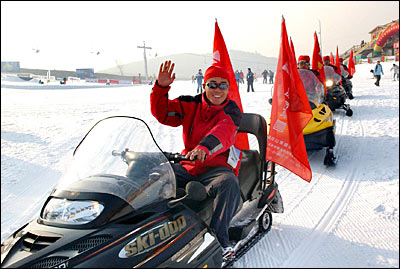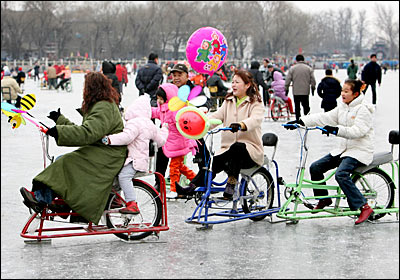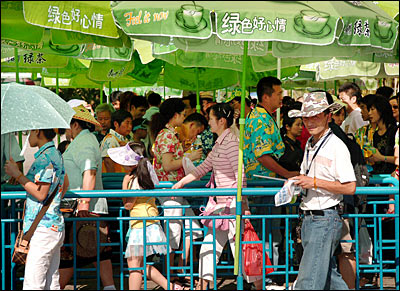| Tools: Save | Print | E-mail | Most Read |
| 'Golden Week' Tourism Trends |
| Adjust font size: |
Tourist numbers reached 78.32 million person-times this Spring Festival "Golden Week," an increase of 13.5 percent from 2004; and income from tourism was 36.8 billion yuan (about US$4.6 billion), 17.6 percent higher than last year, according to the China National Tourism Administration (CNTA) yesterday. According to the administration, income earned includes 2.32 billion yuan (US$288 million) from air travel, and 1.74 billion yuan (US$216 million) from rail travel. Thirty-nine major cities of tourism, including Beijing, Shanghai and Guangzhou, made a total of 17.4 billion yuan (US$2.16 billion), and other cities and scenic spots made 15.3 billion yuan (US$1.90 billion). A total 166 commercial enterprises operating in the 39 cities made 3.759 billion yuan (US$467 million), a 11.6 percent increase from last year, while 162 catering enterprises made 314 million yuan (US$39.0 million), an increase of 3.3 percent. The administration highlighted three key trends: First, both income from tourism and tourist numbers have increased steadily. In 2004, tourist numbers were 69 million person-times and the gross income from tourism was 31.3 billion yuan (US$3.9 billion). Second, despite the increase in tourist numbers, public order has been maintained. Reports of accidents were the lowest on record. According to administration statistics, only two incidents were reported over the seven-day holiday. One was a traffic accident in Yunnan Province that killed three people, and the other involved a Chinese tourist who drowned in the Maldives. Third, the Chinese tourism market continues to mature with regional attractions such as Ice World in northeast China's Jilin and Heilongjiang provinces, and Golden Beaches in south China's Hainan Province and Guangxi Zhuang Autonomous Region growing in popularity. Further, more and more urban residents are spending their holidays in the country. Road trips are also increasingly popular. The "Golden Week" refers to national holidays including May Day, National Day and Spring Festival and can date back to 1999.
(China.org.cn by Zhou Jing and Wang Ke, February 6, 2006) |
| Tools: Save | Print | E-mail | Most Read |
 |
| Related Stories |
| Product Directory China Search |
Country Search Hot Buys |


